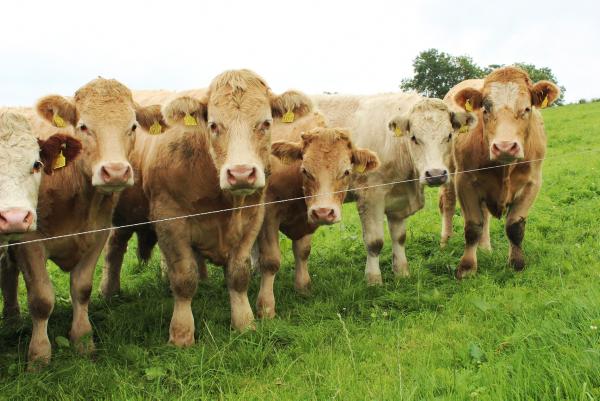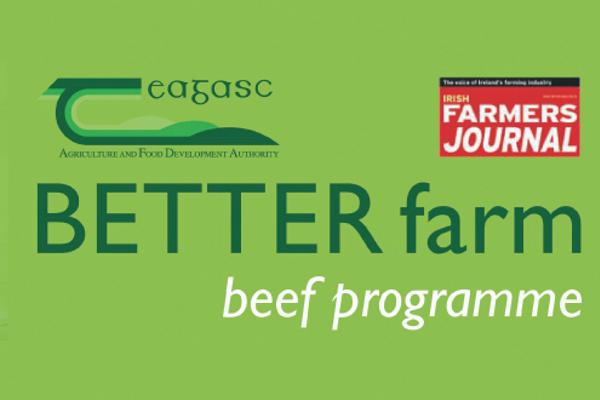The final autumn farm walk being organised by the BETTER farm programme is being hosted by David Mitchell on his 52ha grassland farm at Shantonagh, near Castleblayney, Co Monaghan today.
Like the other autumn walks, there will be a heavy emphasis on managing grassland over the autumn and preparing for next spring.
Unlike the other three BETTER farms that held autumn walks, David’s farm runs a mixed suckler and sheep enterprise, taking all progeny through to slaughter.
His 75-ewe flock lambs in March and brings with it a different set of challenges, in terms of grassland management and grass budgeting, especially in spring.
The land is heavy in nature and is a typical drumlin farm that is common in Co Monaghan. The farm is fragmented, with four main land blocks, and is bordered by a major water course and lakes.
As well as participating in the BETTER farm programme and working with programme manager Adam Woods and local Teagasc adviser Conal Murnaghan, David is a monitor farm with Teagasc’s mini-catchment programme looking at nutrient levels in water getting into surrounding lakes.
Suckler herd
The suckler herd consists of 30 spring-calving cows and 15 autumn-calving cows. There is also a small autumn-calving pedigree herd of Hereford cattle.
Spring calving usually starts in late January and finishes up in early April, but this is gradually coming forward towards late March.
Replacements are bred on farm with a mix of Simmental, Hereford and Limousin cows crossed with a terminal Charolais bull sired by Thrunton Voldemort.
Some cows were bought-in this spring to maintain numbers and the plan is to increase cow numbers in the future. Heifers are now calving at 24 months, whereas prior to the programme, there was a mix of heifers calving at 24 and 30 months.
This year, heifers have been inseminated to a Shorthorn bull, whereas in previous years, they would have calved to an Angus. The Shorthorn will bring calving ease and build on maternal traits in the herd.
Further cross-breeding brings more hybrid vigour into the system.
Finishing
Male progeny are finished as steers at 25 to 26 months. Typical carcase weights are 390kg to 400kg, with cattle mostly achieving R grades.
Heifers that are surplus to requirement for breeding are also finished at 22 months, with a typical carcase weight of 320kg. All cattle are marketed through a local supply group with ABP Clones.
Steer finishing is the preferred option over bulls, as it offers David a simpler system to run.
Store cattle are gradually filtered out to grass from late March onwards. Ewes are housed around 1 January to manage feeding before lambing and to help build grass covers for spring grazing.
Weanlings go out to grass weighing 350kg for heifers and 400kg for steers. This year has seen a good grazing season on the farm.
Heavier land will hold moisture, which helps to push grass growth during the summer.
Steers have averaged 1.1kg/day from a grass-only diet since early summer, which is an excellent level of performance in 14- to 18-month-old cattle. They currently weigh 550kg and will be housed in early October at 580kg to 590kg liveweight.
Heifers will be housed for finishing on 1 October at 500kg to 520kg having gained a similar level of performance as the steers. Meal will be introduced around two weeks pre-housing with both groups getting 3kg/day of a purchased nut. This will get them acclimatised to the finishing diet.
Heifers will be built up to 5kg within a fortnight of housing and slaughtered in early January, although, with such good performance this year, heifers may be killed before Christmas. Heifers will have consumed less than 500kg/head during the finishing period.
Performance
Steers will move onto 4kg at housing and have meal levels gradually increased to 7kg soon afterwards. In previous years, steers were stored until the new year and then pushed for slaughter.
This year, David intends to push steers harder from their housing date to get them finished quicker, rather than storing them. This eliminates unnecessary costs from the finishing period.
To make a profit from winter finishing, the focus has to be on the cost per kilogramme of carcase gain, which is why David is moving toward pushing cattle to finish at a younger age.
A shorter finishing period leaves a greater chance of retaining the profit margin built up from good grassland performance.
For instance, with his steers gaining 1.1kg of liveweight/day from grass, these animals will have a daily carcase gain of 0.6kg/day at 56% kill-out.
At current beef prices of €3.60/kg, they are generating €2.16/day in terms of carcase value.
At a standard grazing cost of €50/t, it is costing approximately 50c/day for steers at grass, leaving a margin over their feed costs of €1.66/head.
The more days at grass that David’s cattle can get will help to build up this margin. During the housing period, feed costs are much higher and it is difficult to build a margin over the cost of feeding.
For example, taking a store period from housing (mid-October) until Christmas where cattle are gaining 0.5kg liveweight/day, the daily carcase gain drops to 0.28kg, which is generating €1/day at the outlined beef price.
A store diet of 3kg meal (€250/t) and 35kg of silage (€25/t) has a daily feed cost of €1.63/head, which is 63c/head/day more than the cattle are generating in carcase value.
This cost has to be covered by the margins built up from good grazing performance. Earlier finishing will remove a lot of this additional cost.






 This is a subscriber-only article
This is a subscriber-only article















SHARING OPTIONS: